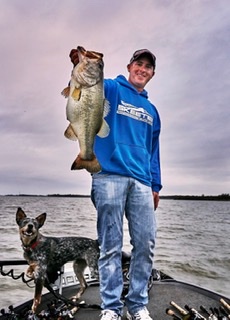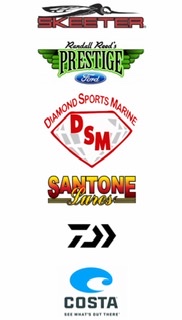It’s hard to imagine what the next big idea in the world of bass fishing will be. In my lifetime, fishing lures sure have come a long way, from super realistic swimbaits to elaborate umbrella rigs. However, one of my go-to lures has been around for many decades and continues to fool big bass on a regular basis.
If you look on the deck of my boat any time of year, you’ll likely see a jig tied on at least one rod. When I was first learning to fish for bass, I realized that jigs were a big fish lure, and I made it my mission to master the technique. I am still learning today, but maybe you’ll find some information here that will make you a more efficient jig fisherman.
Much could be written about swim jigs and football jigs, but the traditional “pitching” or “flipping” jig is the one to be throwing this time of year. In the winter and early spring, prespawn females feed heavily on crawfish. Crawfish are easy prey in the colder water and are one of the best sources of protein a bass can find. A pitching style jig is the perfect crawfish imitator and can also be presented in the heavy timber where big fish live this time of year on Lake Fork.
The first thing I look at when choosing a jig to fish in timber is the head design. This is the most important aspect of a jig in my opinion. You want to find a head that comes through cover well, but more importantly you want one that hooks fish well. Many jig companies boast of the giant hooks they use, and that’s because many anglers miss or lose a lot of bites on jigs. The hook is not at fault in most cases. Usually, the design of the head determines how and if a fish gets hooked.
Ideally, you want a jig head that hooks fish in the top of the mouth. Usually, the jig that comes through the wood cover best will have a narrow or pointed head design. The bulbous, rounded heads such as the traditional “arkie head” design get lodged in the roots and branches often and can be frustrating to fish. However, once a bass has that jig in its mouth and you set the hook, the first thing that makes contact with the fish’s closed lips is the jig head. If it is a narrow jig head style, the jig will immediately turn on its side and you will end up missing the fish or “skin hooking” it. Once hooked, if the point isn’t protruding from the outside of the fish’s face, and is simply threaded sideways inside the fish’s mouth, there’s a good chance you’re using a faulty head design. I have found that I would rather deal with the aggravation of getting snagged more often than miss or lose fish, therefore I try to use a head design that hooks fish the best.
I don’t have any one jig that I use 100% of the time, there are several head designs that are very effective. My favorite is the traditional arkie head. This design gets hung up some, but keep in mind its the head (not the hook), so they can be easily retrieved as long as you don’t get too impatient and bury the hook by yanking the rod. I like the arkie head because the fish are hooked through the roof of the mouth almost every time, and that means more fish in the boat for me and my customers. Often, I use jigs that I put together myself when I use an arkie head because there aren’t many with that design on the market. Triangular shaped heads (for lack of a better word to describe them) such as the one found on Mark Pack’s structure guard jig, are very efficient as well. These are flat on the bottom and don’t roll on their side during the hook set.
Skirt color is another important factor. I think the most important thing is to find a couple colors you have confidence in. For me, two or three colors cover my jig fishing needs year round. I find I have more confidence using a dark colored jig in murky water, such as a black and blue, or black/brown/amber combination. In clear water, a predominantly green pumpkin or watermelon combination works well for me.
In my opinion, elaborate color combinations are a matter of preference and confidence for every angler, so pick something you believe in and let the fish help you make up your mind. For instance, here on Lake Fork, I like a green pumpkin/watermelon combination with a little blue in it certain times of year, that’s just a preference for me. As an angler, you want to find a couple colors you believe in and fish them with 100% confidence. It’s well known that a jig is more of a big fish lure than a numbers lure, so having confidence in the color you’re throwing is important. Being that I probably wont get very many bites, if I’m second guessing and changing colors over and over, its likely I won’t be very successful.
As for jig size, I prefer to go with a heavier jig, but still a compact profile. A ½ or ¾ ounce jig is what I use 90% of the time regardless of water depth. Many fishermen seem to like a lightly weighted jig with a slow, enticing fall rate. However, I believe one of the qualities about jigs that appeal to big bass the most is the fact that it is a “reaction bait”. I fish jigs slow most of the time, but when it rolls over a branch or root it still drops to the bottom quickly and kicks up some dust. When a jig happens to do this over a piece of cover a big bass is laying beneath, I think the fish will have a hard time not pouncing on it out of instinct.
I always trim the silicone skirts on my jigs. I usually cut the skirt a ¼ inch below the bend of the hook. I like to cut a half moon type line from side to side, then I turn the jig and do it again. This way, the strands on the outer edges of the skirt are the shortest and the shorter strands flare out well in the water. This may just be a matter of preference but it seems to work. I also use a compact, crawfish imitating trailer most of the time. I like to match the color of the trailer with the skirt colors.
In my next article I will discuss the how, where, and when of jig fishing. Hopefully you’ve found something useful here in spite of the fact that some of this is very basic information. As a guide fishing with different anglers on a daily basis, I believe there are some misconceptions about jig fishing. Hopefully this gives you some ideas, and if nothing else the confidence to go throw a jig this month!
Follow the link below to see some jig fishing footage we did with In-Fisherman TV on Lake Fork

